Catacomb Matushka Maria Martyr of Gatchina Offers the Consolation Needed Also for These Difficult Days
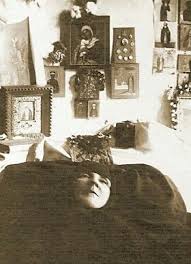
Matushka Maria of Gatchina
THE CONSOLING CATACOMB ELDRESS
Commemorated January 26 (†1930)
Intense sorrows, like gold in the furnace, purify the soul, give it life, fortify and temper it. -St. Joseph of Petrograd
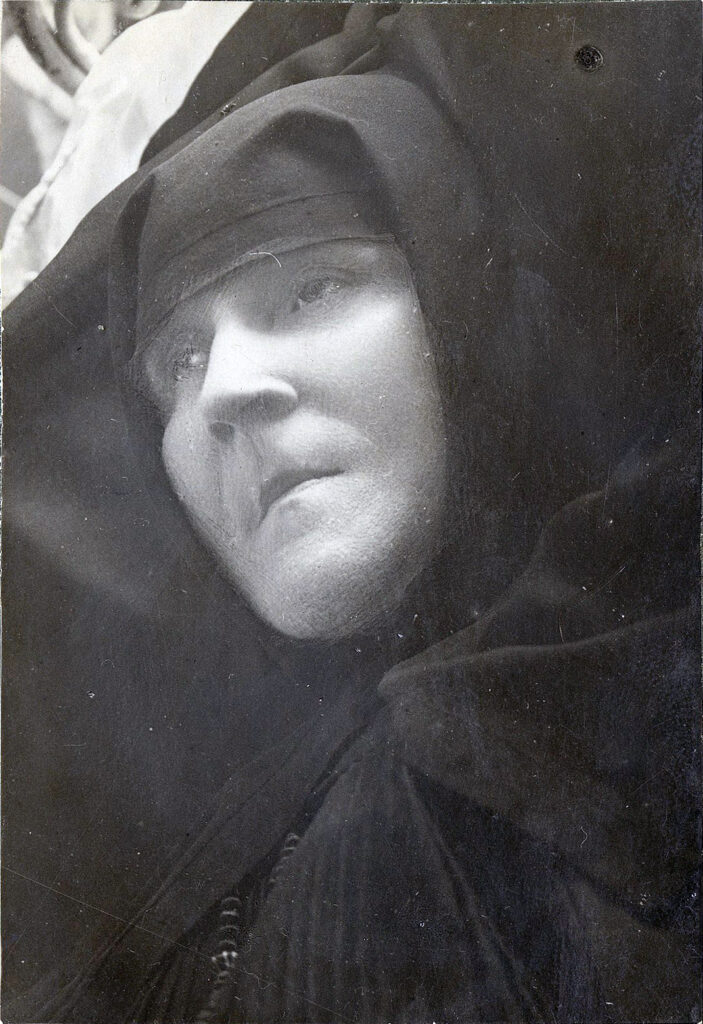
Some thirty miles from Petrograd there is the small town of Gatchina, well known to all residents of Petrograd for its gardens, parks, and palaces. In this town, there lived before the Revolution a nun, Maria, who was known not only by the residents of Gatchina but by many residents of Petrograd as well. The Revolution of 1917 found Matushka Maria on her sickbed. After suffering encephalitis (inflammation of the brain), she entered the condition of the so-called Parkinson’s Disease (named after the physician Parkinson who described this condition): her whole body became as if it were chained and immovable, her face anemic and like a mask; she could speak, but she began to talk with a half-closed mouth, through her teeth, pronouncing slowly and in a monotone. She was a total invalid and was in constant need of help and careful looking after. Usually, this disease proceeds with sharp psychological changes (irritability, a tiresome stubbornness in repeating stereotyped questions, an exaggerated egoism and egocentrism, manifestations of senility, and the like), as a result of which such patients often ended up in psychiatric hospitals. But Mother Maria, being a total physical invalid, not only did not degenerate physically but revealed completely extraordinary features of her personality and character, not characteristic of such patients: she became extremely meek, humble, submissive, undemanding, concentrated in herself; she became engrossed in constant prayer, bearing her difficult condition without the least murmuring. As if as a reward for this humility and patience, the Lord sent her a gift: consolation of the sorrowing. Complete strangers and unknown people, finding themselves in sorrows, grief, depression, and despondency, began to visit and converse with her. And everyone who came to her left consoled, feeling an illumination of their grief, a pacifying of sorrow, a calming of fears, a taking away of depression and despondency.
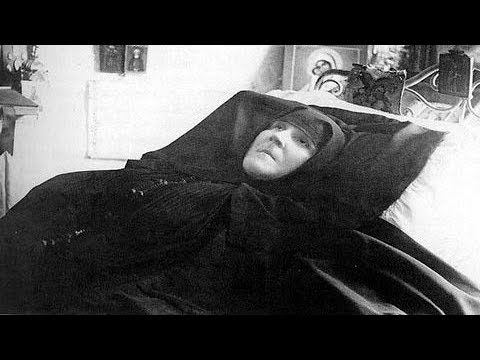
The news of this extraordinary nun gradually spread far beyond the boundaries of the city of Gatchina. Matushka Maria lived in a little wooden house on the outskirts of the city, where I visited her in March 1927. While waiting to be received, I examined the numerous photographs in the reception room and noticed two: Metropolitan Benjamin (of Petrograd, the New Martyr) and Metropolitan Joseph (soon to become the leader of the “Josephite” movement). Metropolitan Joseph on his photograph had written a touching dedication to Matushka Maria, quoting a large selection from his work In the Father’s Embrace, while Metropolitan Benjamin had written briefly: “To the deeply-respected sufferer Matushka Maria, who, among many grieving ones, has consoled also me, a sinner…” I had the great good fortune to be present at the manifestation of miracles of healing of grieving souls. A young man, who had grown despondent after the arrest and exile of his priest-father, left Matushka with a joyful smile, having resolved to accept the rank of deacon. A young woman, who was grieving, became radiantly joyful, similarly resolving to become a nun. An elderly man who was suffering deeply over the death of his son left Matushka upright and encouraged. An elderly woman, who had come with tears, left calm and firm. When I went in to her, I told Matushka Maria that a terrible depression often attacked me, sometimes lasting for several weeks and that I could find no way to get rid of it. “Depression is a spiritual cross,” she told me; “it is sent to help the penitent who does not know how to repent, that is, who after repentance falls again into earlier sins… And therefore, only two medicines can treat this sometimes extremely difficult suffering of the soul. One must either learn to repent and offer the fruits of repentance; or else bear this spiritual cross, one’s depression, with humility, meekness, patience, and great gratitude to the Lord, remembering that the bearing of this cross is accounted by the Lord as the fruit of repentance… And after all, what a great consolation it is to realize that your discouragement is the unacknowledged fruit of repentance, an unconscious self-chastisement for the absence of the fruits that are demanded… From this thought, one should come to contrition, and then the depression gradually melts and the true fruits of repentance will be conceived…” From these words of Matushka Maria it was as if someone had literally made an operation on my soul and removed a spiritual tumor… And I left a different man. About 1930 Matushka Maria was arrested. She was accused of counter-revolutionary propaganda and of participating in a counter-revolutionary organization, according to paragraphs 10 and 11 of Article 58 (of the Soviet criminal code). Her brother was also arrested. The “organization” was composed of only two people. And the “propaganda” against Communism was her gift of consolation in sorrows. Those who were present during the arrest describe a frightful picture of mockery and cruel violence upon the patient sufferer who was paralyzed and incapable of any physical movement. The “politico-religious crime” of Matushka Maria was deepened by her refusal to recognize Metropolitan Sergius after his famous Declaration of 1927, which led to a schism in the Russian Church. The poor suffered was dragged by her arms, which were twisted behind her back, along the floor and ground from her bed to the truck by two Chekists… Swinging her much-suffering, paralyzed body, the Chekists threw it into the truck and took her away. Her brother was taken away in another automobile, a so-called “black raven” (a black limousine used especially for transporting the victims of arrests made in the deep of night; described by Solzhenitzen in volume one of The Gulag Archipelago). The compassionate venerators of Matushka Maria began to bring modest parcels to her in prison. These were accepted for a month. And then, once they did not accept the parcels and said briefly, “She died in the hospital.” (Such helpless patients were usually killed.) The body was not given over. Her brother, a weak, small, refined gentleman, who had looked after her with self-sacrifice and received visitors, after nine months of investigation received five years imprisonment in a Siberian concentration camp.
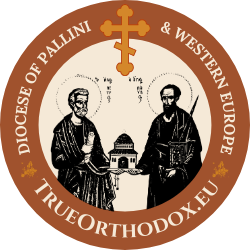
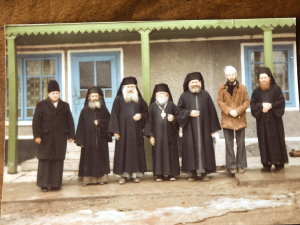
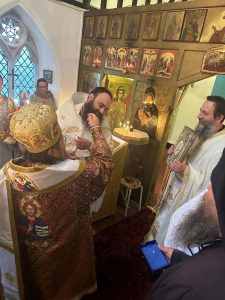
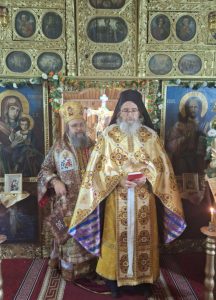
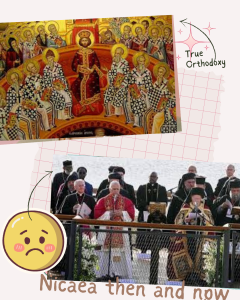

When I read this hagiography, the hagiography of St Matronushka, a small blind woman, with rudimentary arms and legs came to my mind. She suffered the same fate like St Maria of Gatchina. Some would ask to themselves Why? What could totally defenseless women do? What is the main danger they pose? By the power and grace of God, these holy women were helping people to preserve and increase a firm Faith in Christ serving the Rock upon which our house is built, Hope in Him the living water ever refreshing our souls, and Love for Him who is Fire, purifying and enlightening our hearts, spreading to every human being, to animals, to plants and to His whole creation filled with His glory, and this is what the theomachist Christophobic authorities have been fighting against since the very beginning, because it constitutes their biggest and most powerful obstacle, to establish a godless worldly tyranny. Faith undoubted be with us, Hope against all odds never leave us, Love unquenchable fire burn in our hearts. Holy New Martyrs of Russia pray to God for us and help us!
Thank you, Brother Michael. I agree! I think though for the readers’ sake you should confirm that you are not speaking about the well-known Soviet Matronushka.
Matrona the blind of Moscow, is a soviet woman used as a figure in soviet propaganda to deify Stalin, and should not be confused with the the Catacomb New Martyr Matronushka, murdered by the soviets in the 30’s. There are no icons of Saint Matronushka yet. Maybe I shouldn’t have given that example, so I don’t cause confusion. Forgive me.